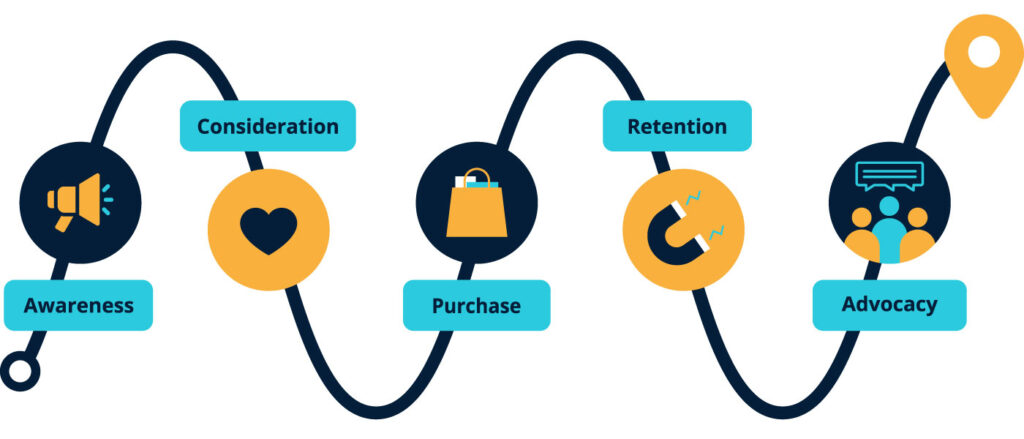Customers expect quick and personalized interactions with brands. A seamless customer journey, where each touchpoint is smooth and efficient, can make or break customer loyalty. One of the best ways to ensure this seamless experience is by leveraging customer service software. With the right tools, businesses can streamline interactions, enhance support, and ultimately, improve customer satisfaction.
Understanding the Importance of a Seamless Journey
The customer journey encompasses every interaction a person has with a company, from the first point of contact to post-purchase support. In the past, this journey could be disjointed, especially as businesses relied on separate systems for handling different customer service channels. However, today’s consumers expect a consistent experience across every interaction. Whether they’re reaching out via email, live chat, or social media, they want a seamless flow where they don’t have to repeat themselves or start from scratch.
This is where customer service software comes in. By integrating multiple communication channels, businesses can offer a unified experience that feels effortless to the customer. The goal is to ensure that each customer feels heard, valued, and supported throughout their entire journey with your brand.
Centralizing Customer Data for Consistency
A key feature of modern customer service software is its ability to centralize customer data. All interactions, whether through email, live chat, or social media, can be recorded in one place. This allows customer service representatives to have access to a complete history of the customer’s journey at any time.
With centralized data, representatives can quickly understand the context of a customer’s previous inquiries or issues. This eliminates the need for customers to repeat themselves or explain their problems multiple times, which often leads to frustration. The software ensures that no matter how a customer chooses to reach out, their information is consistent and up-to-date.
Multi-Channel Support for Convenience
In today’s world, customers interact with brands across a variety of channels, including email, phone calls, live chat, social media, and more. A key benefit of customer service software is its ability to provide multi-channel support. This means businesses can offer multiple ways for customers to get in touch, while still maintaining a consistent experience across all channels.
For instance, if a customer reaches out via live chat and later continues the conversation via email, they should be able to pick up right where they left off. Customer service software integrates these channels, ensuring that customers don’t have to repeat information or face disjointed communication. This flexibility in communication channels makes it easier for customers to engage in a way that suits them best.
Automation for Speed and Efficiency
Speed is crucial in customer service. When customers reach out, they expect quick responses. Customer service software can automate many routine tasks, freeing up agents to focus on more complex issues. Features like automated responses for frequently asked questions or a chatbot for initial inquiries can reduce wait times significantly.
Automation also helps route customer inquiries to the right department or agent. For example, if a customer has a billing question, the software can automatically direct them to a representative trained to handle such issues. This reduces customer frustration and ensures that each issue is addressed by the right person the first time.
Personalized Interactions for Better Engagement
Personalization plays a critical role in creating a seamless customer journey. Customers expect businesses to understand their needs and provide tailored recommendations or solutions. Customer service software helps with this by leveraging customer data to create personalized experiences.
For example, by tracking a customer’s past purchases or interactions, a representative can offer more relevant solutions or product recommendations. This level of personalization makes customers feel more valued and can increase satisfaction and loyalty. When a customer feels that a brand understands their preferences and needs, they are more likely to continue engaging with that brand.
Proactive Support to Anticipate Needs
A seamless customer journey doesn’t just mean reacting to customer inquiries – it’s about anticipating needs and addressing issues before they arise. Many customer service software platforms offer proactive support features, such as automated alerts for potential problems or predictive analytics that help identify patterns in customer behavior.
For example, if a customer has repeatedly faced issues with a product, the software can alert customer service agents to reach out and offer assistance before the issue escalates. Proactively addressing problems before they become major concerns helps prevent dissatisfaction and improves the overall experience.
Reporting and Insights to Optimize the Journey
To continuously improve the customer journey, businesses need to track and analyze interactions with customers. Most customer service software platforms come equipped with reporting tools that provide valuable insights into customer behavior, agent performance, and overall service quality.
These insights allow businesses to identify areas for improvement. For instance, if customers are frequently reaching out about the same issue, it may indicate a problem with the product or service that needs to be addressed. By leveraging these insights, businesses can continuously refine their approach and ensure they’re always providing the best possible experience for their customers.
A Seamless Journey is Essential
Creating a seamless customer journey is no longer just a nice-to-have; it’s a necessity in today’s competitive market. By utilizing customer service software, businesses can centralize customer data, provide multi-channel support, automate routine tasks, and offer personalized and proactive assistance. The result is a smoother, more satisfying experience that keeps customers coming back.
The integration of these tools not only improves customer satisfaction but also drives efficiency for businesses. As customer expectations continue to rise, businesses that prioritize a seamless customer journey through customer service software will be better positioned to build lasting relationships and foster loyalty.
